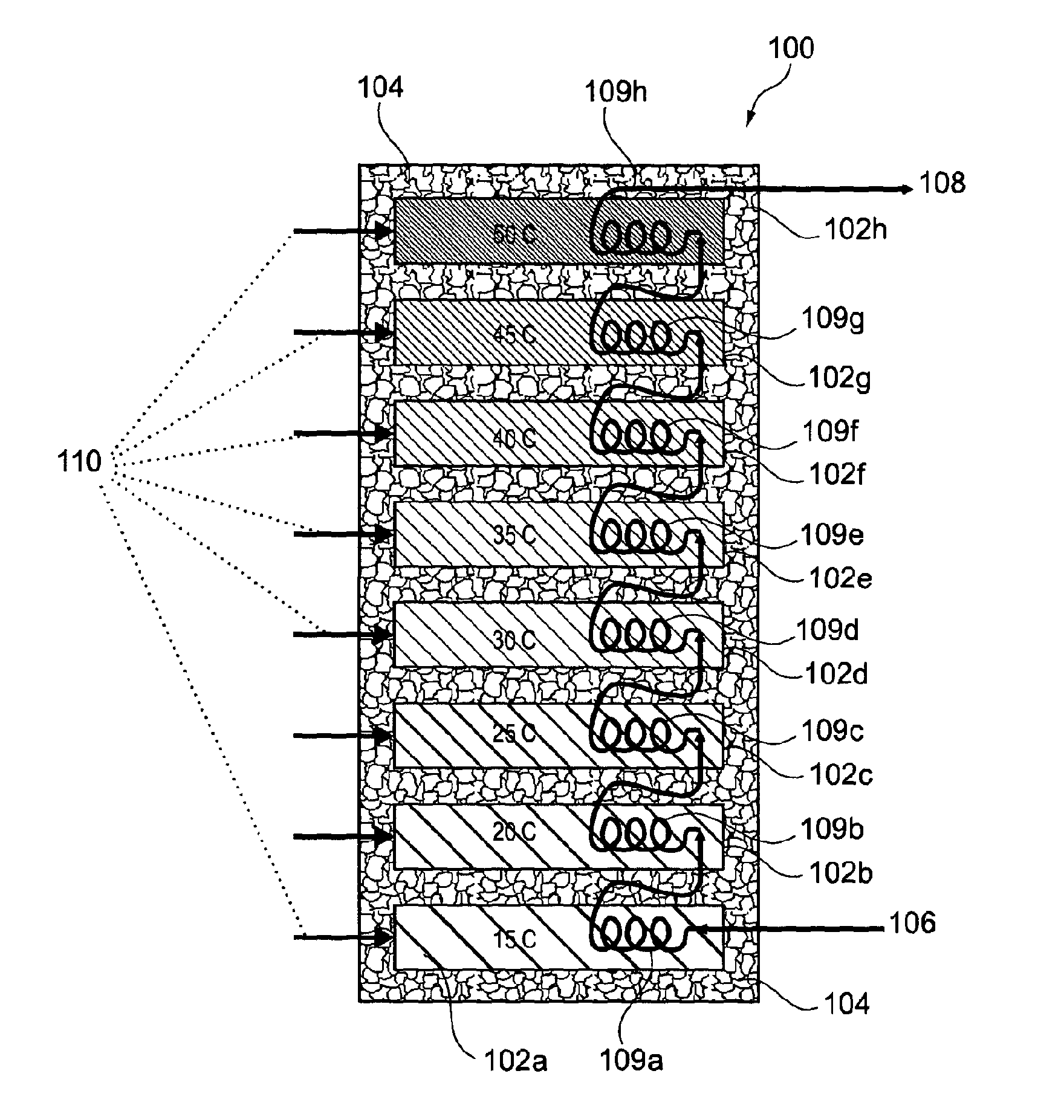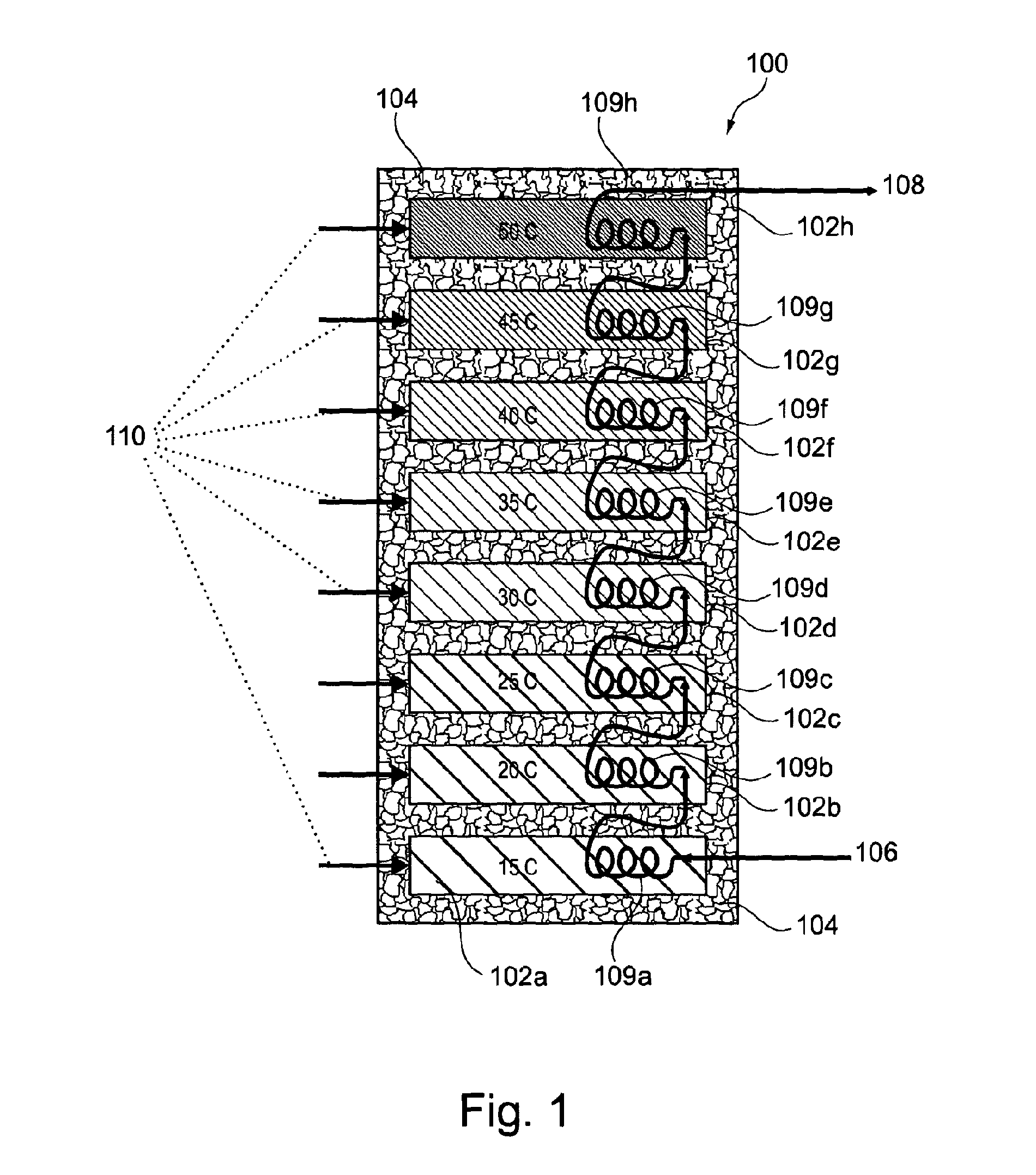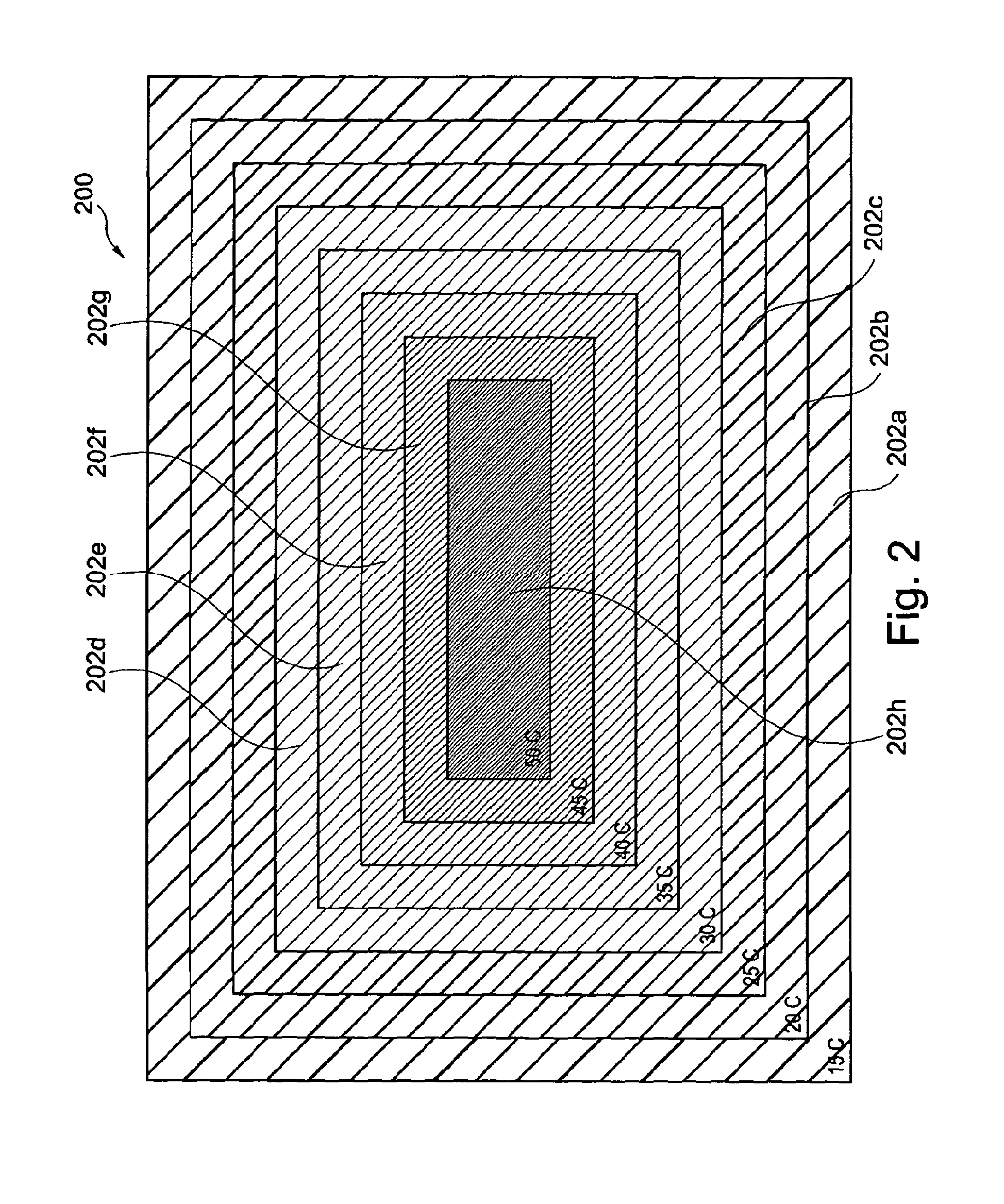Energy storage systems
a technology of energy storage and energy storage, applied in the field can solve the problems of continuing to use fossil fuels, affecting the efficiency of energy storage systems, so as to reduce the use of additional pumping, the effect of reducing the cost and cos
- Summary
- Abstract
- Description
- Claims
- Application Information
AI Technical Summary
Benefits of technology
Problems solved by technology
Method used
Image
Examples
Embodiment Construction
[0574]FIG. 1 is a representation of an energy storage system according to the present invention generally designated 100. The heating / cooling system comprises a series and / or a collection of banks 102a, 102b, 102c, 102d, 102e, 102f, 102g and 102h which are used to collect and store thermal energy from, for example, a solar thermal panel (not shown) and, for example, later deliver thermal energy to heat up cool water. Although FIG. 1 shows eight banks, the invention is intended to cover any suitable number of banks. Each of the banks 102a, 102b, 102c, 102d, 102e, 102f, 102g, 102h contains a different phase change material which therefore has a different melting point to store heat. As shown in FIG. 1, there is insulation 104 around the banks 102a, 102b, 102c, 102d, 102e, 102f, 102g, 102h. Bank 102a is at temperature of about 15° C. by virtue of containing a suitable phase change material with a phase transition temperature of 15° C. Similarly, bank 102b is at temperature of about 20°...
PUM
| Property | Measurement | Unit |
|---|---|---|
| temperature | aaaaa | aaaaa |
| temperature | aaaaa | aaaaa |
| temperatures | aaaaa | aaaaa |
Abstract
Description
Claims
Application Information
 Login to View More
Login to View More - R&D
- Intellectual Property
- Life Sciences
- Materials
- Tech Scout
- Unparalleled Data Quality
- Higher Quality Content
- 60% Fewer Hallucinations
Browse by: Latest US Patents, China's latest patents, Technical Efficacy Thesaurus, Application Domain, Technology Topic, Popular Technical Reports.
© 2025 PatSnap. All rights reserved.Legal|Privacy policy|Modern Slavery Act Transparency Statement|Sitemap|About US| Contact US: help@patsnap.com



